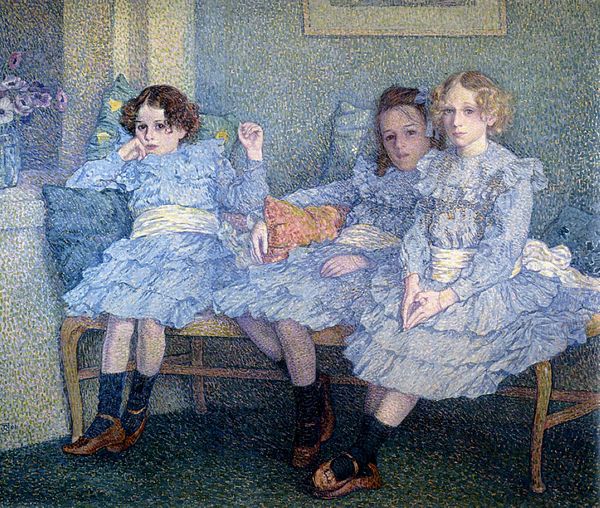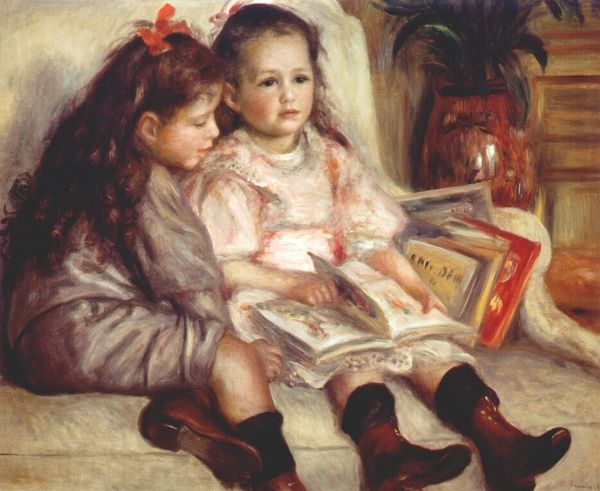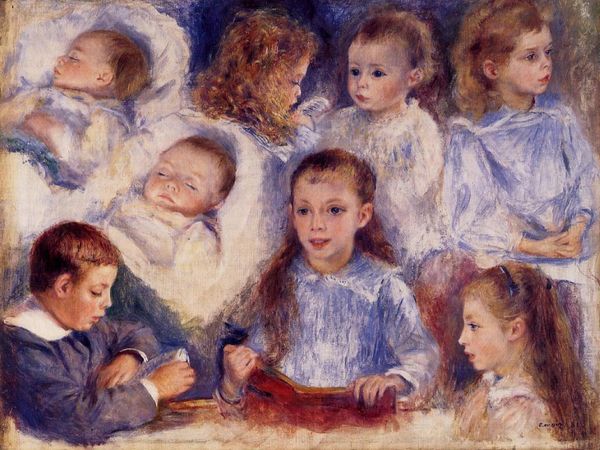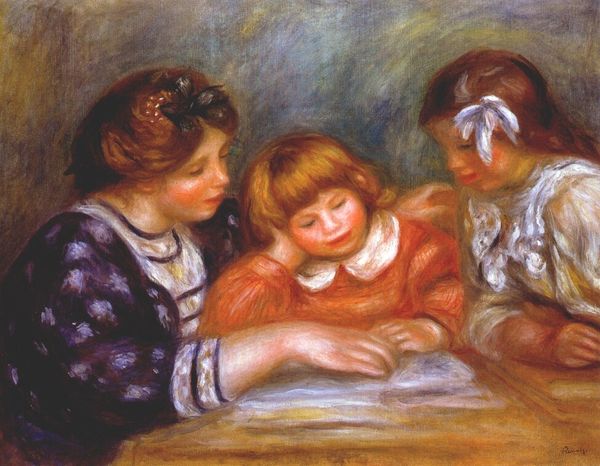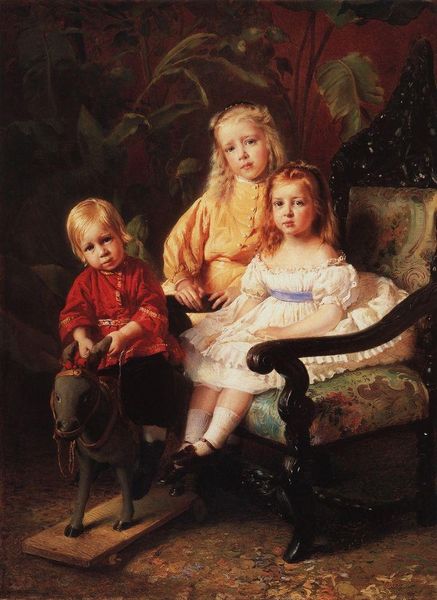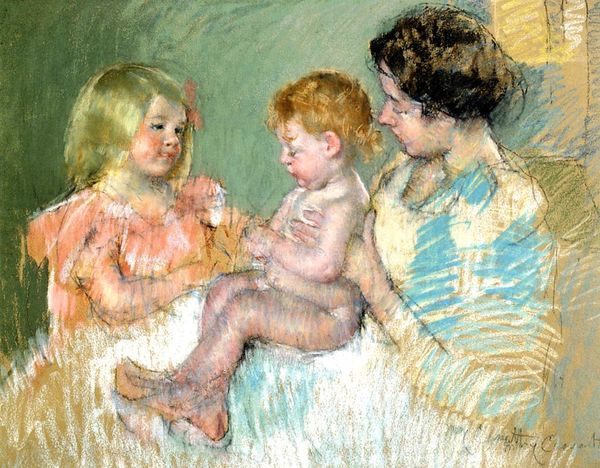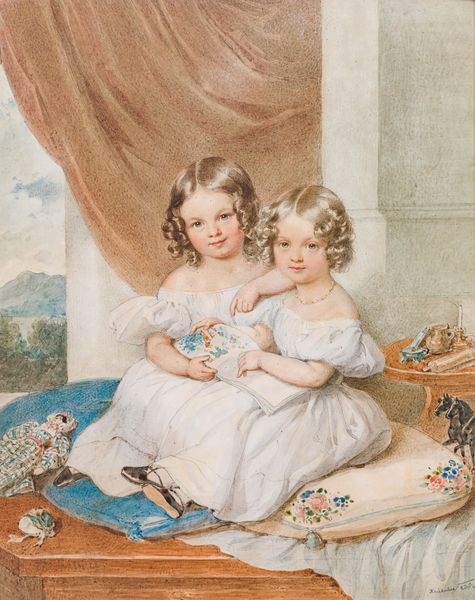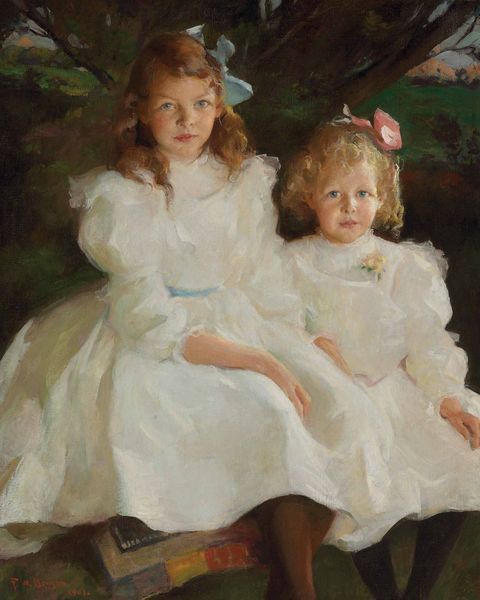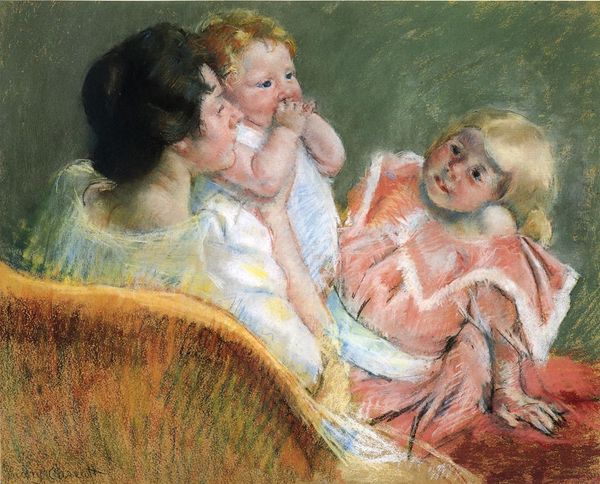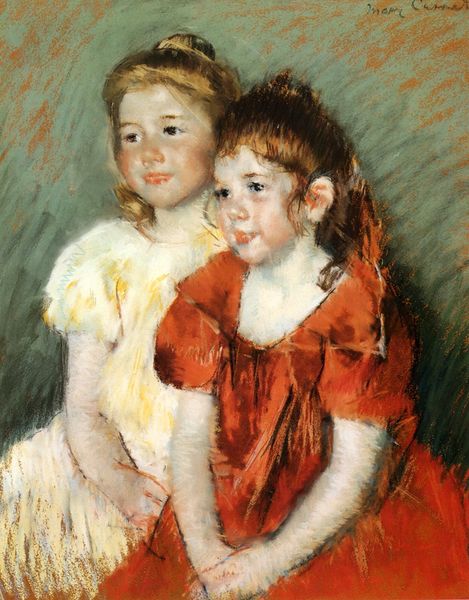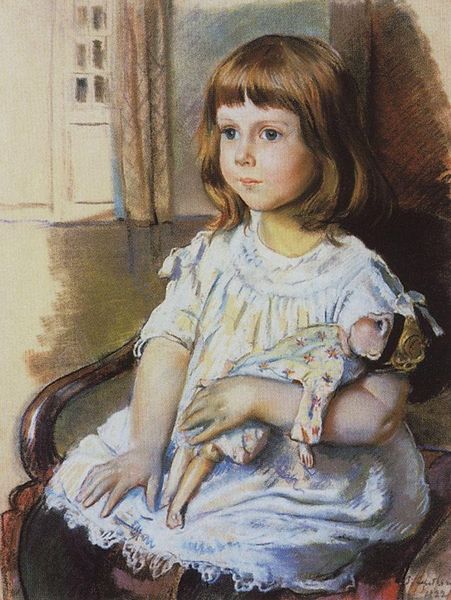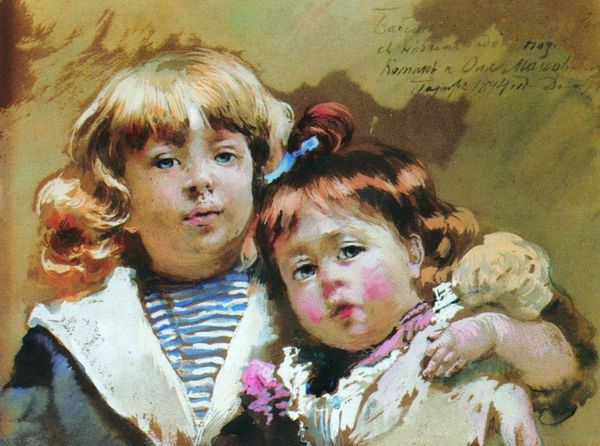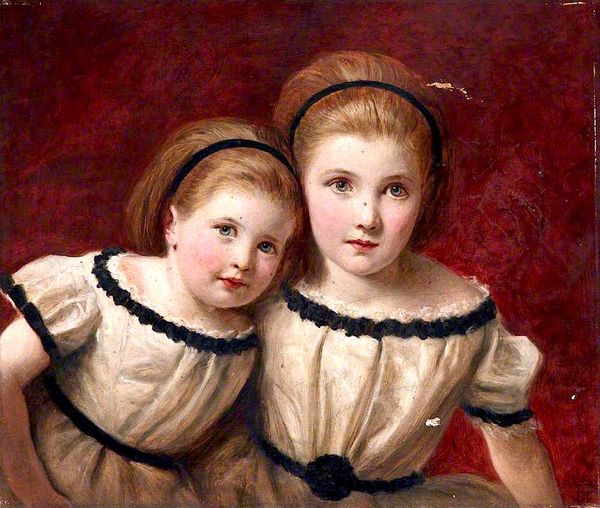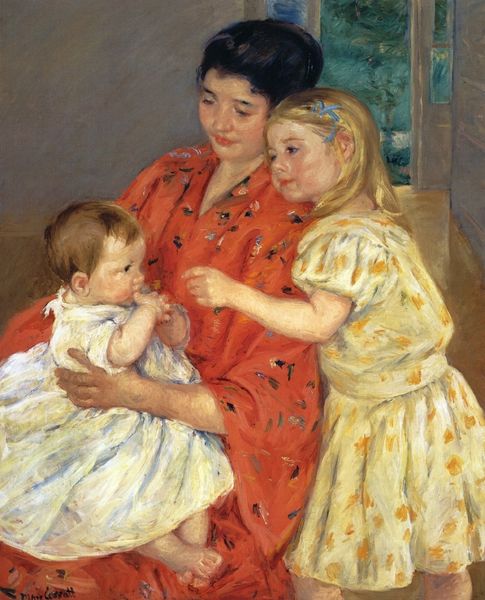
Copyright: Public domain
Editor: Here we have "Thomas Braun's Three Daughters," a 1904 painting by Théo van Rysselberghe. It's striking how these three girls are captured with such tender detail. It gives me such a domestic feeling. How would you interpret the social context surrounding a painting like this? Curator: It's important to remember that fin-de-siècle portraits like these were powerful statements about bourgeois identity. The commission itself signified a family’s affluence and aspiration for upward social mobility. Look closely: what does the girls’ clothing, particularly the matching outfits and bows, suggest about societal expectations and gender roles at the time? Editor: Well, their matching clothes suggest conformity, perhaps that they should follow in step with one another? Curator: Exactly. Consider also the context of growing feminist movements during this era. This painting can be viewed as a way to idealize and perhaps subtly contain notions of female innocence and domesticity, subtly reinforcing existing social norms, no? Editor: So it’s not just a pretty picture; it's part of a wider social conversation! It makes you think about what these paintings left unsaid. Curator: Precisely. These depictions of children also gained importance amid rising concerns about childhood and family within public health debates. Artists participated actively in circulating these concerns. It begs us to examine, what visual messages were artists encouraged to relay to society? Editor: I’ve certainly learned to look beyond the surface. The art world wasn’t isolated but really entangled with society and politics at large. Thanks for making me see that today. Curator: And I believe examining those interconnections are so crucial when studying art!
Comments
No comments
Be the first to comment and join the conversation on the ultimate creative platform.
